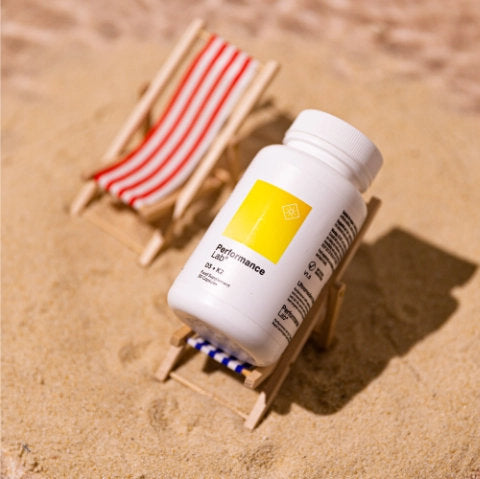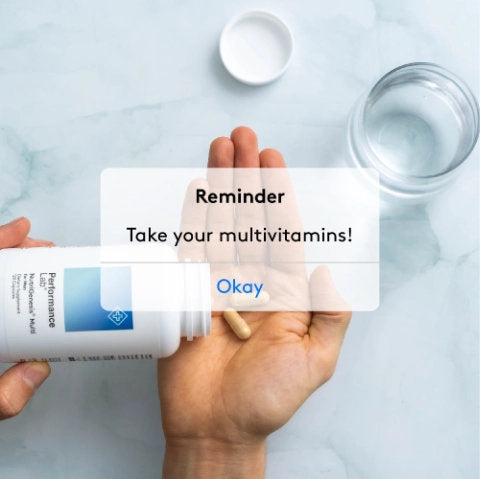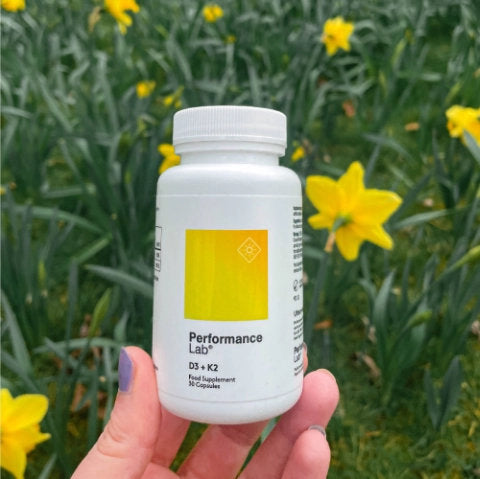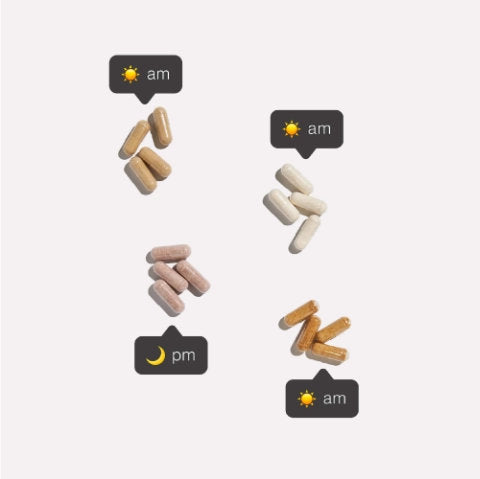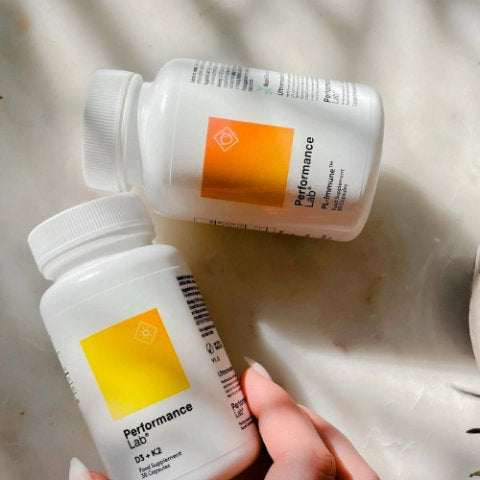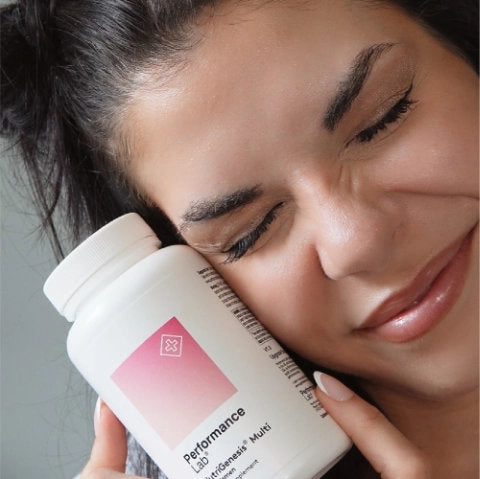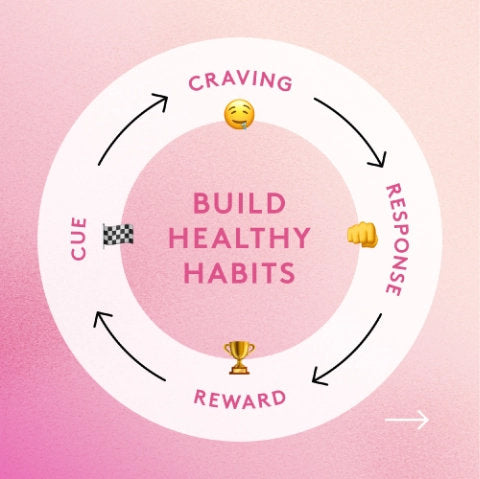Let’s face it—food is good, and most of us don’t want to miss out on enjoyment because we’re following a strict diet.
As a result, we’re not always giving out bodies what they need to thrive. And the fact of the matter is that a good chunk of the population is deficient in one or more nutrients, usually leaning towards the side of “more.” Critical nutrients like iron, folate, vitamin D, and iodine are some of the most common nutrients missing from the diet, but the truth is that most people aren’t getting enough of all of the essential vitamins and minerals.
But how do we make sure we're hitting our targets? We either tweak our diet to include more nutrient-dense foods or pop back a slew of vitamins to provide enough. It’s estimated that over 52% of Americans use supplements regularly 1. If you’re struggling with multiple nutrient deficiencies at once, popping a multi can be one of the easiest ways to get your fill. While adding a multi to your supplement stack may be convenient, sometimes taking certain nutrients together isn’t the wisest idea.
So, we’re giving you the scoop on two of the most common nutrient deficiencies, iron and magnesium, and if supplementing them together is safe.
The Scoop On Iron
Most people know what iron is. It’s a mineral concentrated in animal meats and is essential for optimal human performance. But does anyone know why iron is necessary?
While both men and women require adequate amounts of iron daily, getting your fill is slightly more important for women of reproductive age, as menstruation causes iron loss through menses. Iron is essential for almost all living organisms and plays critical roles in several metabolic processes such as oxygen transport, DNA synthesis, and electron transport 2. You’ll find iron naturally as heme iron and non-heme iron. The former is found in animal products like red meat and seafood, while the latter is inherent to plant foods.
Although plant-based iron is widely available in many food sources, vegetarians and vegans are often deficient because non-heme iron is much more difficult to absorb than heme.
That’s because many plant foods contain compounds like phytate, oxalate, calcium, and polyphenols that inhibit iron absorption 3.
And for vegetarians, where grain makes up a significant portion of the diet, anti-nutrient (absorption inhibitors) levels are high. As such, iron deficiency in vegetarians and vegans is due to inadequate intake and low bioavailability of iron from plant foods. Chronic low iron levels can lead to iron-deficiency anemia, which results in microcytic (small, irregularly shaped) erythrocytes and insufficient production of hemoglobin 3.
Oxygen supply decreases, and cells, tissues, and organs don’t receive enough oxygen to function optimally.
As a result, you’ll see symptoms like poor cognitive function, fatigue, lowered immunity, pregnancy complications, and more. There’s a fine line between getting enough iron and getting too much—iron can form free radicals, which means that body concentrations must be tightly regulated to avoid excessive amounts, as it can lead to tissue damage 2.
But why do we need iron?
- Oxygen transports
- DNA synthesis
- Brain health
- Red blood cell formation
- Immune function
- Energy production
What’s The Deal With Magnesium?
Magnesium is the second most abundant intracellular cation after potassium—it’s found in high concentrations within cells and is required for several physiological functions.
It’s necessary for more than 300 enzymatic reactions that function primarily in the production of ATP, the body’s primary energy source 4.
ATP is required for the function of nearly every cell in the body, and insufficient ATP production due to low magnesium levels or disruption to magnesium metabolism there interferes with many biological processes. It plays critical roles in 4, 5:
- ATP production
- Muscle contraction
- Neurotransmitter release
- Fat, protein, and nucleic acid synthesis
- Coenzyme production
- Cardiac function
- Immune health
- Bone formation
- Calcium and potassium transport
- Insulin metabolism
But here’s the thing—most people aren’t consuming enough magnesium daily.
Research suggests that a whopping 50% of the U.S. adult population doesn’t get enough magnesium, which means you open yourself up to the risks of magnesium deficiency 6, 7.
That includes symptoms like:
- Muscle twitches and tremors
- Mood disturbances
- Muscle cramps and weakness
- Weakened bones
- Fatigue
- High blood pressure
- Cardiac arrhythmia (irregular heartbeat)
Low magnesium has also been linked to several chronic diseases, including Alzheimer's, insulin resistance and type-2 diabetes, hypertension, CVD, migraines, and ADHD 6.
Can You Supplement Iron And Magnesium Together?
While over-the-counter medications give you warnings about interactions, nutritional supplements tend to keep things under the radar. Many people are under the impression that natural means safe—and that’s not always the case. In most cases, iron and magnesium are safe to supplement together. However, be careful with the form of magnesium you choose.
There is some evidence showing an interaction between iron and antacids, including magnesium oxide 8. They found that magnesium oxide can impair iron absorption by decreasing the pH and forming macromolecular polymers. But where interaction between other forms of magnesium and iron is concerned, there’s little evidence suggesting it’s unsafe or shouldn’t be supplemented together. However, you need to be mindful of iron and certain other minerals. While there may not be an interaction between iron and magnesium, iron does interact with other nutrients, which means supplementing them together can interfere with absorption and body stores. Specifically, iron and magnesium absorption are influenced by:
- High doses of zinc — decreased iron absorption
- Excessive fiber intake — reduces magnesium absorption
- Vitamin D — increases magnesium absorption
- Vitamin A deficiency — may exacerbate iron-deficiency anemia by altering iron metabolism
- Calcium — decreased absorption of heme and non-heme iron
- Zinc deficiency — may exacerbate iron-deficiency anemia
- Low copper — reduces iron absorption
Heavy metals—copper, zinc, iron, cobalt, and manganese—interfere with iron absorption because they share the same intestinal absorption pathway. 2
Recommended intake
As we said, magnesium and iron are two of the most important nutrients in the body and two of the most common deficiencies. So, how much do you need to maintain levels? The recommended daily intake for iron is as follows 9: Men
- 19-30 years: 6 mg/day
- 31-50 years: 6 mg/day
- 51-70 years: 6 mg/day
- >70 years: 6 mg/day
Women
- 19-30 years: 8.1 mg/day
- 31-50 years: 8.1 mg/day
- 51-70 years: 5 mg/day
- >70 years: 5 mg/day
And for magnesium, the recommended daily intake is between 310mg and 420 mg per day, depending on age and gender, but studies have found positive results with doses up to 2,500mg per day.
Final Thoughts
Because magnesium and iron are essential for optimal physiological function and performance, making a concerted effort to consume enough is essential—but it can also be tedious.
While you can make an effort to eat iron- and magnesium-rich foods and calculate your daily intake, who wants to do that? Instead, why not through two powerful supplements into the mix that’ll keep your stores topped up with all essential nutrients—not just magnesium and iron.
 When you stack Performance Lab NutriGenesis Multi with Performance Lab Recover, you’re hitting both ends of the spectrum.
When you stack Performance Lab NutriGenesis Multi with Performance Lab Recover, you’re hitting both ends of the spectrum.
Support a proper recovery after intense exercise with a powerful combination of KarboLyn® carbohydrates, Oryzatein® organic brown rice protein, and NutriGenesis vitamins and minerals for the ultimate in synergistic nutrient replenishment and muscle growth and recovery.
And when you combine that with NutriGenesis multi featuring 17+ essential vitamins and minerals, you’re providing your body with the foundation for what it needs to thrive, not just survive. It’s the ultimate stack to keep your iron and magnesium levels high and support optimal full-body function every day.
References
- Kantor ED, Rehm CD, Du M, White E, Giovannucci EL. Trends in Dietary Supplement Use Among US Adults From 1999-2012. JAMA. 2016;316(14):1464-1474.
- Abbaspour N, Hurrell R, Kelishadi R. Review on iron and its importance for human health. J Res Med Sci. 2014;19(2):164-174.
- Pawlak R, Berger J, Hines I. Iron Status of Vegetarian Adults: A Review of Literature. Am J Lifestyle Med. 2016;12(6):486-498.
- Jahnen-Dechent W, Ketteler M. Magnesium basics. Clin Kidney J. 2012;5(Suppl 1):i3-i14.
- Rude RK. Physiology of magnesium metabolism and the important role of magnesium in potassium deficiency. Am J Cardiol. 1989;63(14):31G-34G.
- Gröber U, Schmidt J, Kisters K. Magnesium in Prevention and Therapy. Nutrients. 2015;7(9):8199-8226.
- Razzaque MS. Magnesium: Are We Consuming Enough?. Nutrients. 2018;10(12):1863.
- Sugimoto H, Yamada U. Iron deficiency anemia induced by magnesium overuse: a case report. Biopsychosoc Med. 2019;13:18.
- Institute of Medicine (US) Panel on Micronutrients. Dietary Reference Intakes for Vitamin A, Vitamin K, Arsenic, Boron, Chromium, Copper, Iodine, Iron, Manganese, Molybdenum, Nickel, Silicon, Vanadium, and Zinc. Washington (DC): National Academies Press (US); 2001. 9, Iron. Available from: https://www.ncbi.nlm.nih.gov/books/NBK222309/

